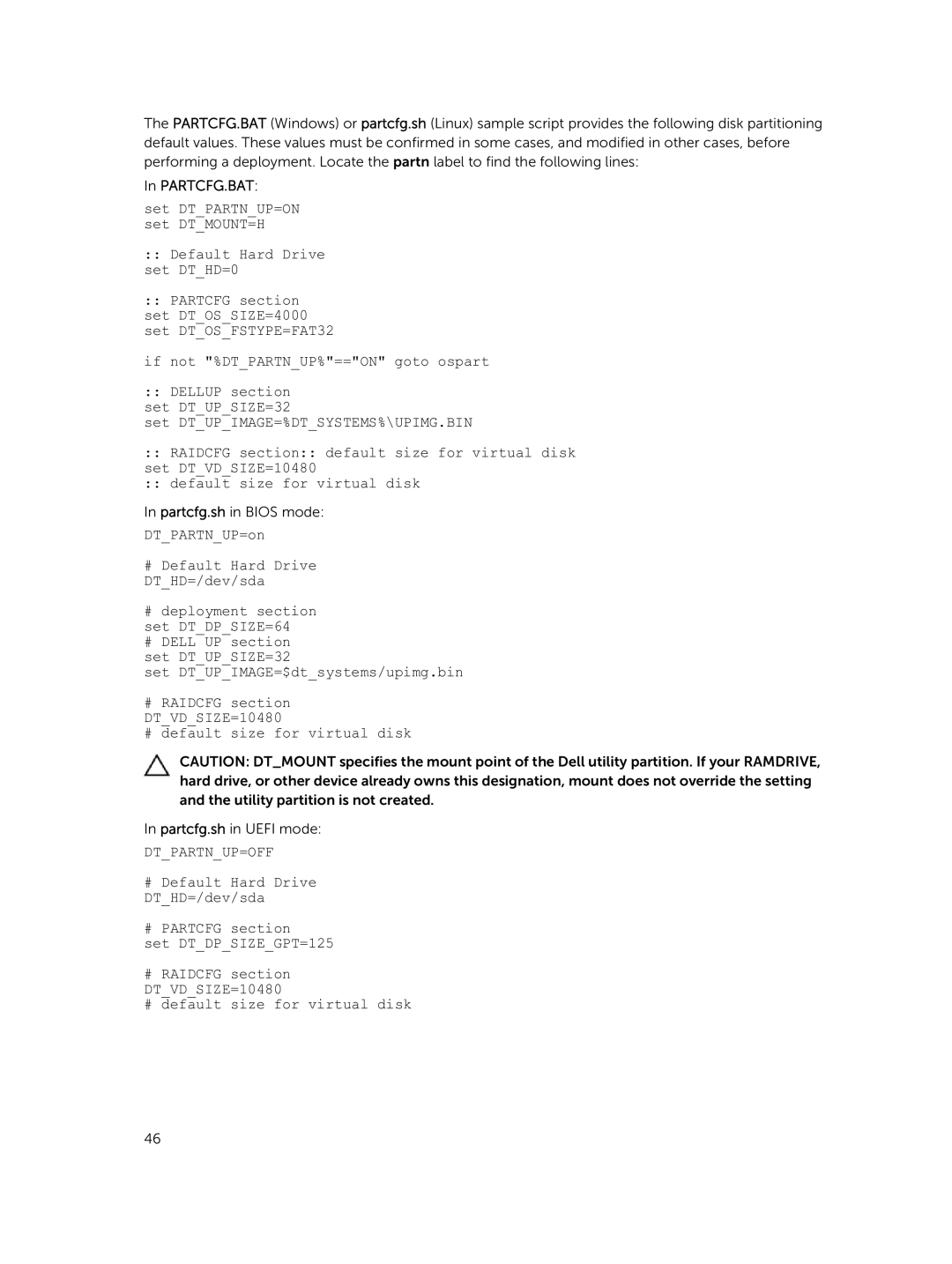The PARTCFG.BAT (Windows) or partcfg.sh (Linux) sample script provides the following disk partitioning default values. These values must be confirmed in some cases, and modified in other cases, before performing a deployment. Locate the partn label to find the following lines:
In PARTCFG.BAT:
set DT_PARTN_UP=ON set DT_MOUNT=H
::Default Hard Drive set DT_HD=0
::PARTCFG section set DT_OS_SIZE=4000 set DT_OS_FSTYPE=FAT32
if not "%DT_PARTN_UP%"=="ON" goto ospart
::DELLUP section set DT_UP_SIZE=32
set DT_UP_IMAGE=%DT_SYSTEMS%\UPIMG.BIN
::RAIDCFG section:: default size for virtual disk set DT_VD_SIZE=10480
::default size for virtual disk
In partcfg.sh in BIOS mode:
DT_PARTN_UP=on
#Default Hard Drive DT_HD=/dev/sda
#deployment section set DT_DP_SIZE=64
#DELL UP section set DT_UP_SIZE=32
set DT_UP_IMAGE=$dt_systems/upimg.bin
#RAIDCFG section
DT_VD_SIZE=10480
# default size for virtual disk
CAUTION: DT_MOUNT specifies the mount point of the Dell utility partition. If your RAMDRIVE, hard drive, or other device already owns this designation, mount does not override the setting and the utility partition is not created.
In partcfg.sh in UEFI mode:
DT_PARTN_UP=OFF
#Default Hard Drive DT_HD=/dev/sda
#PARTCFG section
set DT_DP_SIZE_GPT=125
#RAIDCFG section DT_VD_SIZE=10480
#default size for virtual disk
46
